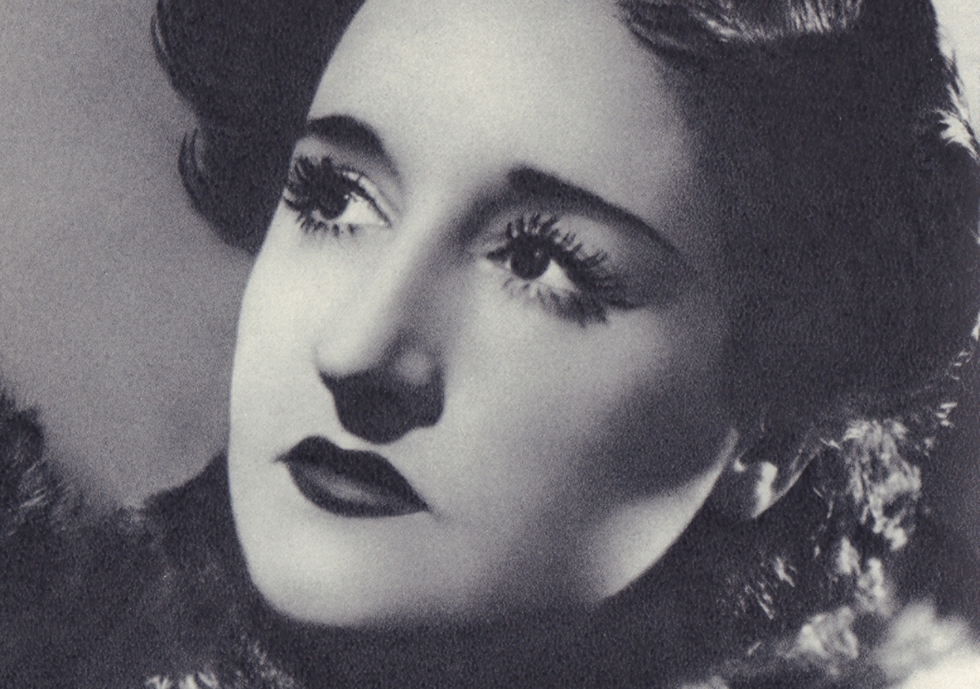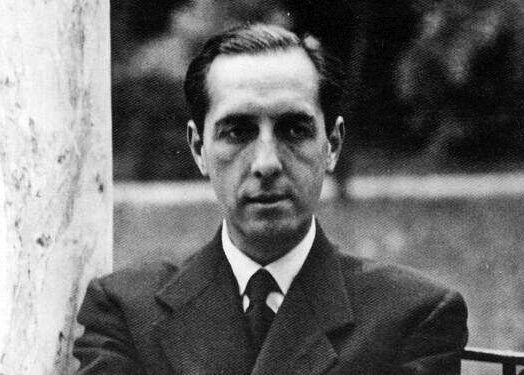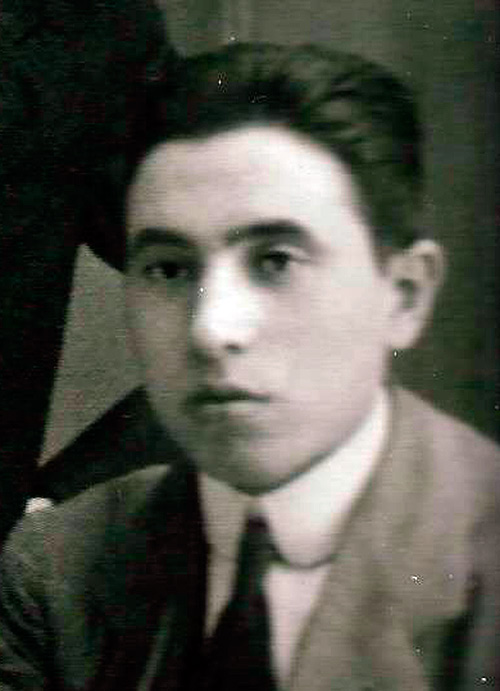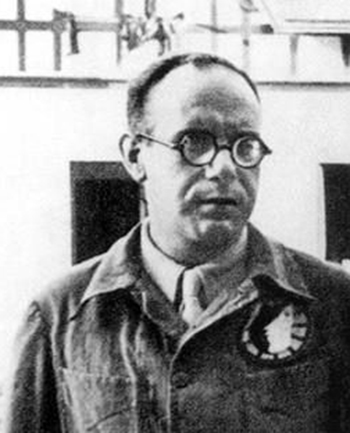Surrealist painter belonging to the Generation of ’27, she was born in Viveiro, Lugo, in 1902, and died in Madrid in 1995. One of the freest and most eccentric spirits of the group of plastic artists of the Generation of ’27 who transformed the role of women. She was one of the founders of Las Sinsombrero (Hatless Women) group. After the Civil War she lived in exile in various Latin American countries, including Uruguay, Argentina and Chile. She returned to Spain in 1962 and, despite the oblivion, she mounted an exhibition and resumed her work as an illustrator for the Revista de Occidente magazine, founded by Ortega y Gasset, where she had begun to collaborate in 1928. García Lorca defined her thus: “Maruja Mallo, between Verbena and Scarecrow all the beauty of the world fits inside the eye, her pictures are the ones I have seen painted with more imagination, emotion and sensuality”.
Along with Lorca, Dalí and Margarita Manso she devised the movement of Las Sinsombrero. One day, walking through the Puerta de Sol, it occurred to them to take off their hats to “decongest ideas”, a trivial gesture with which they raised a scandal and for which they were stoned. The anecdote, decades later, gave its name to the women’s emancipation movement characteristic of the Generation of ’27.
Her life was characterized by a continuous coming and going, great loves and, as a good surrealist, passions and exorbitant ideas. In 1913, her family (composed of thirteen siblings) moved from her native Lugo to Avilés, from where she left in 1922 to a feverish Madrid in full renewal of artistic genres and the most outdated social uses. There she enrolled in the Academy of Fine Arts of San Fernando where she studied until 1926. In the classrooms of the academy she met up with Salvador Dalí who in turn introduced her to the rest of the members of the Residencia de Estudiantes (Students’ Residence). Rafael Alberti dedicated the poem The First Ascension of Maruja Mallo to the Subsoil to her: “Tú [You], / tú que baja a las cloacas donde las flores más flores son ya unos tristes salivazos sin sueños [you who go down to the sewers where the flowers are already sad spittle without dreams]/ y mueres por las alcantarillas que desembocan a las verbenas [and die in the sewers that flow into the verbenas]”. Dalí, for his part, defined her as “half shellfish, half angel”.
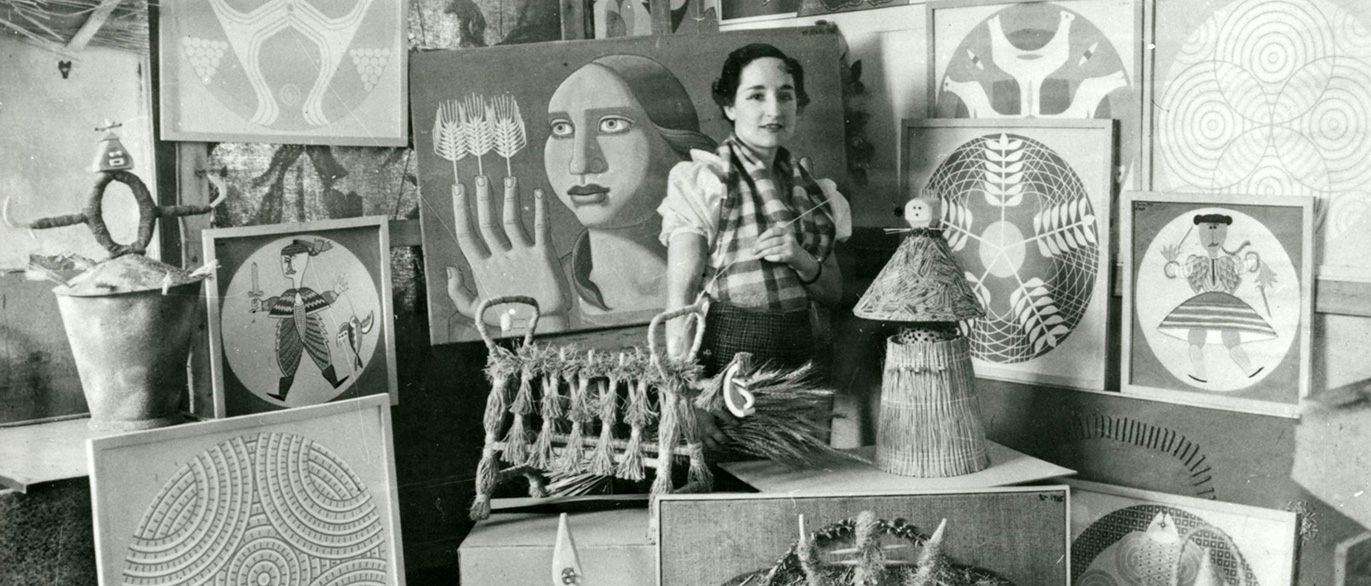
Together with Lorca, Dalí and Margarita Manso, she devised the Las Sinsombrero movement. One day, walking through the Puerta de Sol, it occurred to them to take off their hats to “decongest ideas”, a trivial gesture with which they raised a scandal and for which they were stoned. The anecdote, decades later, gave its name to the women’s emancipation movement characteristic of the Generation of ’27. In 1928, she exhibited in the halls of the Revista de Occidente magazine at the invitation of Ortega y Gasset. Her anecdotes are part of the history of surrealism. Another day with Dalí, Lorca and Manso, she visited the monastery of Silos, but as the entrance was forbidden to women they wore their jackets as pants: “They accepted our entrance to the sacred precinct as promoters of the transvestite in reverse,” she said. “Pre-punk humor,” they would later call the deep object of their laughter.
In the 1930s, she collaborated – and fell passionately in love – with Rafael Alberti. She prepared the sets for Saint Casilda (1930) and The Spotted Bird (published in 1932) and collaborated in the editing of I was a Fool and what I Saw Left me Two Fools (1929) and in Sermons and Sojourns (1930).
From her initial works in which she recreates popular scenes, she moves on to somber paintings that reflect on the putrid and lands in the most surprising surrealism that will forever mark her production and her own existence. A trip to Paris in 1932, sponsored by the Committee of the Extension of Studies, deepens the influence of Breton’s movement. In France he met Breton himself, who bought him a painting entitled Scarecrow, and other artists such as Miró, Picasso, De Chirico and Magritte.
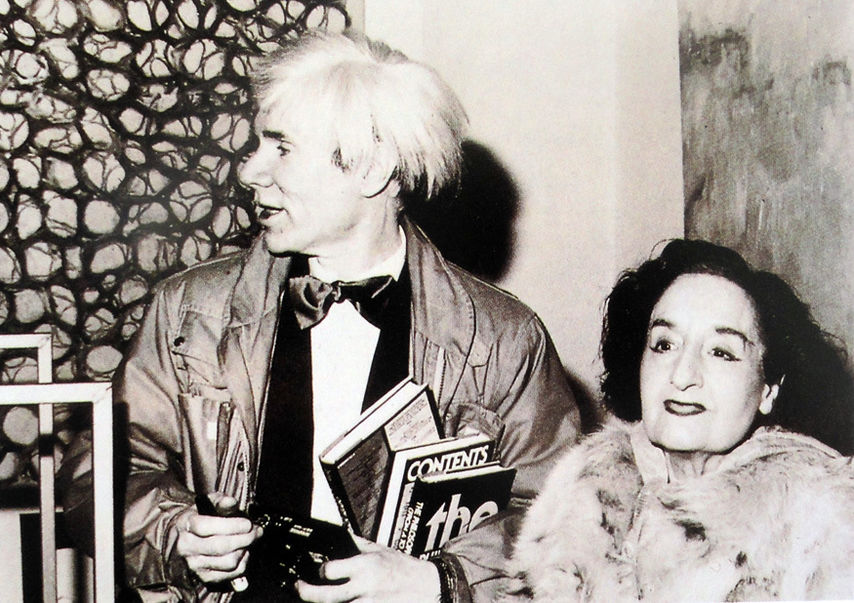
On her return to Spain, committed to the ideals of the Republic, she met Miguel Hernández, with whom she had a love affair, and planned a drama based on the blody events of Casas Viejas. The poems from Image of your Footprint, included in The Ray that does not Cease, are inspired by her. While fostering her relationship with the surrealists of Paris and London, she participates as a teacher in the Pedagogical Missions. The Civil War surprised her in Galicia and from there she went to Portugal where, through the mediation of Gabriela Mistral, who was then Chilean ambassador in Lisbon, she managed to embark to Buenos Aires, the city where she began a forced estrangement that helped her, paradoxically, to make her painting known in Chile, Brazil, the United States and Argentina.
In 1939, she published The Popular in Spanish Plastic through my Work (1939), and began to paint female portraits reminiscent of Pop Art. In 1945, her appearances dwindled, as did her exhibitions. The exile syndrome took its toll on a painter who never ceased to be a profound intellectual. Borges, Alfonso Reyes, with whom she lived for two years, and Pablo Neruda are some of the artists with whom she interacted during her years in America.

In 1962, Maruja Mallo, or Marúnica as she presented herself, returned to Spain after 25 years of exile, but her public life was veiled, although she kept her old collaboration as illustrator of the Revista de Occidente. In 1982, she was finally doubly recognized by the socialist government of Spain, which awarded her the Gold Medal for Merit in Fine Arts and the Fine Arts Award of the Community of Madrid. The last living surrealist visited the Arco Fair that year and, according to her companion, when she saw the queues of spectators, she asked: “My dear, are these fans or cattle?
She died at the age of 93 on February 6, 1995, in a geriatric clinic where she had been hospitalized for ten years.
